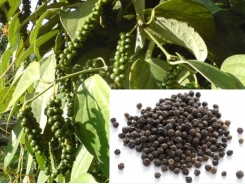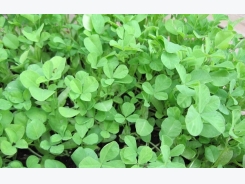Cucumber Cultivation Information Guide

Introduction of Cucumber Cultivation:- Cucumber is one of the famous and a widely cultivated vegetable plant and belongs to the gourd family of “Cucurbitaceae”, genus of “Cucumis”. This is basically a creeping vine that bears cylindrical fruits that are used as vegetables. Oils extracted from cucumber seeds are used for medicinal purpose. Slicing, pickling & burpless are the three main varieties of cucumber cultivated across the globe and within these varieties, several different cultivars have been emerged in the market. The cucumber is originated from Southern Asia. However, it is grown in all of the countries in the world. Cucumbers can be grown in greenhouse, polyhouse and in hydroponic system as well.
Health Benefits of Cucumber:- The following are some of the health benefits of cucumber

Health Benefits of Cucumber
- Cucumbers are a good source of B vitamins.
- Cucumbers rehydrate body and replenish daily vitamins.
- Cucumbers are good for skin and hair health.
- Cucumbers help in fighting cancers.
- Cucumbers help in relieving bad breath.
- Cucumbers aid in hangover cure.
- Cucumbers aid in weight loss and digestion.
- Cucumbers aid in diabetes cure.
- Cucumbers reduce cholesterol and controls blood pressure.
- Cucumbers promote joint health, relieve gout & arthritis pain.
Varieties of Cucumber:- There are many hybrid varieties and they are specific to the local market. Before going for commercial production of cucumber, one should do the enquiry about high yielding and disease resistant seeds available. Japanese Long Green, Straight Eight, Balam Khira Peons, priya, Pusa Snajog, and Poinsettee are the mainly cultivated varieties in Indian region.
Local Names of Cucumber:- Kheera, Kakdi (Urdu), krastavac (Bosnian), bodring (Uzbek), krástavica (Bulgarian), 오이 (Korean), pepino (Spanish), แตงกวา (Thai), dưa leo (Vietnamese), pipino (Filipino), huáng guā (Chinese), الخيار) Arabic), Tha Khwar (Burmese), Kyuri (Japanese), Troh Sork (Cambodian), salatalık (Turkish), Timun (Malay), خيار) Persian), chiekoef (Taiwanese), Огірок (Ukrainian). Local Names of Cucumber in India:- Khira, Kheera, Kakdi (Hindi), Sasha, Sausha (Bengali), Vellarikka (Tamil), Keera Doskaya (Telugu), Savatekai (Kannada), Vellarikka (Malayalam), Sitalchinni (Marathi), Kakdi (Gujarati), Tiyoh (Assamese).
Climate Requirements for Cucumber Cultivation:- The cucumber crop is best suited for warm season regions and thrives best between 20°C and 26°C. Cucumber crop is very sensitive to frost conditions. Commercial cucumber yield can be high in moderate warm temperature conditions.

Cucumber Farming
Soil Requirements for Cucumber Cultivation:- Cucumber can be cultivated in wide range of soils from sandy loam to heavy. However, Sandy loam soils, clay loam soils rich in organic matter with good drainage are best for its cultivation. Soil pH between 6.0 and 7.0 is best for getting good yields.
Propagation and Seed Rate in Cucumber Cultivation:- Propagation of cucumber is done through seeds. The approximate seed rate is about 3 to 4 kg per hectare land.

Cucumber Seeds
It is recommended to treat the cucumber seeds with Carbendazim 2 grams/kg of seeds before sowing in the prepared field.
Land Preparation, Sowing Time and Method in Cucumber Cultivation:- Land should be prepared well enough to remove any weeds from previous crops. Giving 3 to 4 ploughings will get the soil to fine tilth stage and form long channels at 1.5 m apart. To make the soil rich in organic matter, supplementing with garden manure or well decomposed farm yard manure like cow dung is advised. Cucumbers can be grown as both summer and monsoon (rainy season) crop and the sowing time depends on the type of crop going to be grown. Generally, summer crops are sown from Jan to Feb where as rainy season crops are sown from June to July. When it comes to sowing method, cucumber seeds are usually sown by dibbling method at a row-to-row distance of 1.5 to 2.5 meters and plant-to-plant spacing of 60 cm to 90 cm. Two to three seeds should be sown in each pit.

Long Variety Cucumber
Training in Cucumber Cultivation:- As the vine can creep on ground or vertically. To get more yields, supporting the vine in vertical way is preferred. Use any bamboo sticks or any wired poles to make the vine grow vertically.
Irrigation in Cucumber Cultivation:- Generally summer crop requires frequent irrigations to maintain enough soil moisture during its growth and development whereas rainy season crop does not require any irrigation. Irrigate the main field before dibbling the seeds and subsequent irrigations should be given once a week depending on the soil moisture.

Cucumber Flowering Stage
In case of water problem and to use the water effectively, drip irrigation system can be installed in cucumber cultivation with main and sub-main pipes and place the inline lateral tubes at an interval of 1.5 meter. Place the drippers in lateral tubes at an interval of 60 cm & 50 cm spacing with 4 LPH and 3.5 LPH capacities respectively.
Intercultural Operations in Cucumber Cultivation:- Shallow cultivation is recommended during initial stages of growth to control the weeds. Herbicides also can be used to control the weeds. Apply Glycophosphate, Paraquat and Chloramben @ gm per acre to control the weeds effectively. Hoeing and weeding should be carried out twice or thrice.

Hydroponic Cucumbers
Manures and Fertilizers in Cucumber Cultivation:- As part of organic manure, supplement the field with 25 tonnes of well decomposed farmyard manure (FMY) at the time of land preparation. Chemical fertilizers like 50 kg of “N” and 25 kg of “P” per hectare should be applied. As a first application 1/2 dose of “N” and full dose of “P” should be carried out at the time of seed sowing. Remaining half dose of “N” should be given 1 month after sowing the seeds.
Pests and Diseases in Cucumber Cultivation:- Angular leaf spot, Bacterial wilt, Anthracnose, Belly rot (Fruit rot, Damping-off), Downy mildew, Fusarium wilt (Cucumber wilt, Foot-rot), Gummy stem blight, Target leaf spot, Cucumber mosaic, Cucumber beetles, Cabbage looper, Flea beetles, Aphids (Peach aphid, Melon aphid), Squash mosaic, Cutworms, Stinkbugs , Thrips, Bacterial leaf spot, Cucumber green mottle mosaic, Verticillium wilt,Aster yellows, Alternaria leaf blight, Watermelon mosaic, Cercospora leaf spot, Septoria leaf spot are the pests and diseases found in cucumber cultivation. Selecting disease resistant seeds and treating the seeds with fungicides can prevent some of these pests and diseases. However, for their symptoms and control measures, please contact the local horticulture department.

Growing Cucumber in Greenhouse
Harvesting In Cucumber Cultivation:- Harvesting can be started 45 to 50 days after sowing. On an average 10 to 12 harvests can be obtained. Timely picking is more important in regards to quality of the vegetable. Any sharp object can be used to collect the cucumber without damaging the vine.

Ready To Harvest Cucumber
Yield in Cucumber Cultivation:- Yield of any crop depends on soil type, cultivar (variety), climatic conditions or irrigation facilities and above all good field management practices. The average yield of 8 to 10 tonnes/ha in 80 to 90 days for salad can be obtained.
Bottom Line of Cucumber Cultivation:- One can get excellent profits provided there are proper farm management practices are in place.
Có thể bạn quan tâm
Phần mềm

Phối trộn thức ăn chăn nuôi

Pha dung dịch thủy canh

Định mức cho tôm ăn

Phối trộn phân bón NPK

Xác định tỷ lệ tôm sống

Chuyển đổi đơn vị phân bón

Xác định công suất sục khí

Chuyển đổi đơn vị tôm

Tính diện tích nhà kính

Tính thể tích ao hồ



 How To Grow Banana In A Right Way…
How To Grow Banana In A Right Way…  Carrot Farming Information Guide
Carrot Farming Information Guide